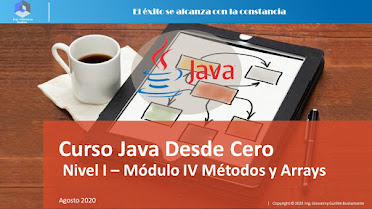Java Desde Cero
En esta entrega presento los conceptos sobre la gestión de excepciones e inicio a las clases gráficas:
Excepciones- try-catch
- finally / throw
Clases Gáficas:
- GUI: JFrame / JPanel / JLabel / JButton
- GUI: JTextField / JMenu
- GUI: JToolBar / JRadioButton / JComboBox








